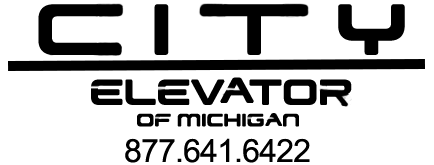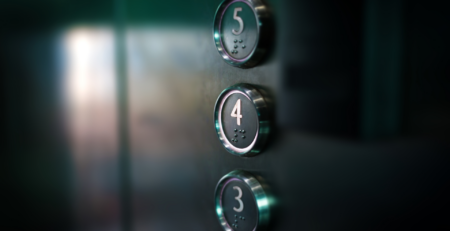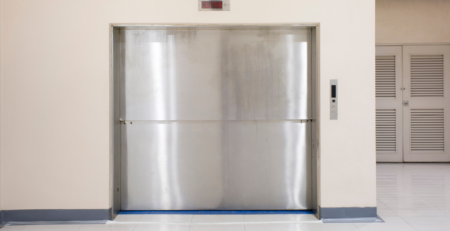A Comprehensive Guide to Different Types of Elevators
Did you know the first elevator was invented by the Greek mathematician Archimedes? He did this with ropes looped around a man-powered capstan.
There were also lifts for taking men and animals into the Colosseum. Having a lift was so convenient that even ancient people had different types of elevators to suit various purposes.
Today, there are many different elevator options to choose from. It may be challenging to decipher them from each other, but it’s important to make the right choice for your property.
Keep reading to learn more about the different types of elevators and which kind serves what function.
Hydraulic Elevator
A hydraulic elevator moves via a cylinder, which drives an internal piston through the oil pumped inside. The oil comes from an electric tank inside a machine room.
The piston pushes the elevator up while the oil flows downward into the cylinder. When the lift comes down, the oil leaves the cylinder. There are three kinds of hydraulic elevators:
- Conventional
- Roped
- Holeless
The conventional hydraulic elevator has an elevator pit, which you can find under the ground floor. The elevator pit is where everything that makes the lift move, like the cylinder and piston, are.
Some elevator pits need a shallower hole underneath that houses a telescoping piston when the lift drops. A roped hydraulic elevator uses a combination of ropes and a piston to move up or down.
Holeless hydraulic lifts are fundamentally conventional ones that don’t need the shallow hole on the underside. The telescoping pistons are on the base of the elevator pit instead.
There are also holeless hydraulic lifts that don’t use telescoping pistons, and they aren’t able to lift as high as lifts with extendable pistons.
Hydraulic Elevators: Pros and Cons
These elevators are usually only found in buildings eight or less stories high. A hydraulic elevator requires a lot of energy to operate.
Their engines are fighting against gravity, so it makes sense they need more power to run. In exchange, they are great for moving huge, heavy freight, like cars.
Hydraulic elevators’ enormous energy use has seen them replaced in many buildings. Roomless elevators are seen as better elevator options thanks to their lower energy consumption.
You’ll spend less money to install a hydraulic elevator, though. They’re cheaper to set up and cost less to maintain.
Practice regular upkeep of your hydraulic lift, as an oil leak could quickly become a fire or an environmental hazard. These elevators aren’t much to maintain, but cleaning the resulting damages may turn expensive.
Traction Elevators
Traction elevators use pulley systems made of steel ropes (or belts) and counterweights. Specifically, the counterweight offsets the weight of whatever is in the cabin while the ropes or belts move it up or down.
There are two kinds of traction elevators: geared and gearless. Geared traction uses a gearbox attached to the motor to turn the hoisting sheave. A hoisting sheave is part of a pulley system.
It’s the rotating wheel that the rope travels along. This spinning wheel turns on an axle inside the pully frame. The hoisting sheave is what lifts the elevator. Gearless traction elevators’ sheaves connect directly to the motors.
Because gearless elevators forgo the gearbox, they’re faster than their geared counterparts. Both versions provide a smoother, quieter ride and are more energy-efficient than hydraulic lifts.
Machine Room and Machine Roomless Elevators
Machine rooms are separate rooms that hold lift machinery, often above the elevator shaft. Some machine rooms are located below the elevator shaft or in areas near elevator banks (a series of elevators in a building).
Machine roomless (MRL) elevators are lifts that don’t require machinery rooms. An MRL elevator uses a smaller hoisting sheave, so all the components used to lift the cab are inside the lift shaft.
MRL elevators are popular because they’re an economical use of space. Installing an elevator is also much faster when you use a machine roomless model. A machine room and an MRL elevator can be traction or hydraulic.
Commercial Elevators
A commercial elevator is any elevator used for commercial purposes. What’s tricky about commercial elevators is they can even be found in areas where people live.
An apartment complex lift? That is a commercial elevator because apartment buildings are considered commercial spaces. They do technically house businesses, after all.
To clarify further, a residential elevator is one you’d find inside a private home. For example, if you lived inside a two-story house and were installing an elevator, that lift would be considered residential.
Types of Commercial Lifts
Passenger lifts are the types of elevators we were referring to inside apartment complexes. Their purpose is to carry people up and down buildings and can vary in size, speed, and interior design.
A service elevator is for transporting goods throughout buildings by employees. A hospital, for example, would have a service elevator to move patients in hospital beds and gurneys.
Freight elevators are like the bigger, more extreme versions of service lifts. They’re for hauling cargo inside industrial complexes. Freight lifts aren’t for passenger transport.
Freight elevators aren’t necessarily made to look attractive. They’re built for rough working conditions and constructed from durable materials, like steel walls and floors.
Dumbwaiters are like tiny freight elevators. Restaurants use them to move food, cups, plates, and cutlery. However, you can find these small lifts inside other kinds of commercial and residential buildings.
Maintaining All Types of Elevators
There are many types of elevators, and deciding which your business should install depends on what you need. Companies constantly transporting goods may want to consider service elevators, while an MRL elevator is best for buildings where conserving space is your goal.
Regardless of what kind of elevator you have, City Elevator of Michigan is here to help. You can count on us to install, repair, or modernize your lift.
Our 200 years of combined experience means we’ve got more than enough experience to solve your problem. Contact us if you need elevator services today!

Sam Bruno is the driving force behind City Elevator, elevating the standards for elevator installation, maintenance, and modernization services. With an extensive background in mechanical engineering and a deep understanding of elevator systems, Sam has positioned City Elevator as a trusted provider of innovative and safe vertical transportation solutions. His commitment to excellence and safety ensures that every project delivers not only on functionality but also on reliability and design, enhancing the user experience for buildings of all types.






